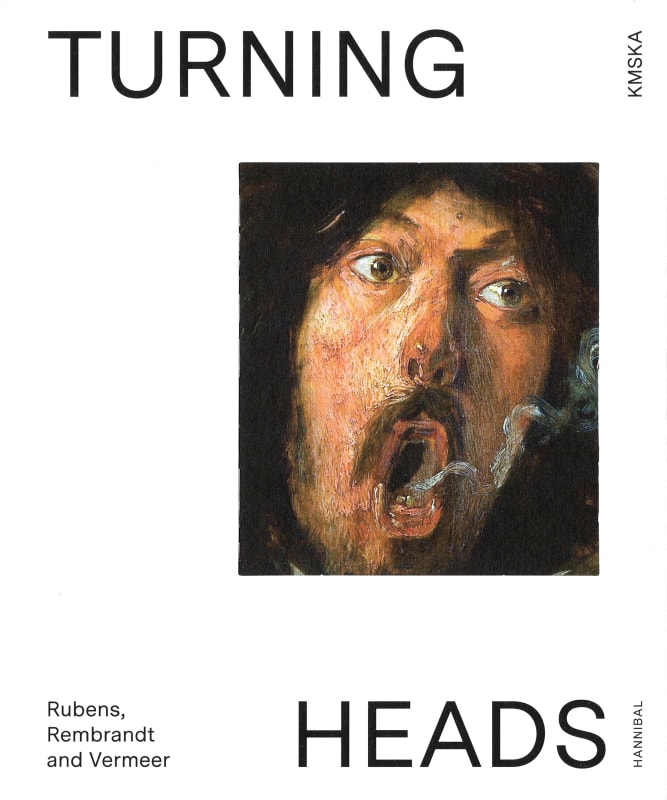Caught in Mid Air
To look at it is to set it going. Our eyes fizz around the surface as, surely, his brush must have as he made it. The trace of his hand is still alive, every brushmark still visible and distinct. Rembrandt’s Laughing Man, painted around 1629 while he was living in Leiden, is very different to the smoother work he typically made at the time. The face is a slippery network of marks each sliding one into the next. The whiskers are carved into the wet paint with the back of a brush – the glowing copper and gold leaf of the support transformed into tangled highlights. It feels almost centrifugal in its fluidity. How does it all hold together? The scaffolding of these marks somehow bound into a prismatic unity. Is the laughing man the subject of the painting or is it ‘laughter’? Would a conventional portrait have the same inner engine? This painting, to borrow from Robert Frost, is like ice on a stove, riding on its own melting.
I owe a huge personal debt to paintings like Rembrandt’s Laughing Man. I had been making more or less conventional portraits professionally for 15 years before I first heard the term ‘tronie’. I knew many of the paintings the term referred to individually but I never realised they had a collective name and shared a common set of impulses. My research into the subject coincided with a period when I was rapidly losing what interest I had in portraiture’s conventions, namely, slavish physical likeness of an identifiable sitter mindful of social status, posterity or some sort of narrative. But now I had found ‘tronies’, a genre of head paintings that had no interest in these conventions in the first place.
Reinterpreting these anonymous, expressive heads was about freedom, the same freedom they allowed their original makers. There were times, before tronies, when I’d be right in the work and things would be happening on the canvas that were exciting and unpredictable but they’d have nothing to do with a ‘portrait’. I wanted to be able to respond to what was happening in the painting but I would have to remind myself of the goal, the fixed endpoint, and check my instincts to serve the desires of a portrait, often undoing passages of the painting that I was excited by. A key distinction emerged: the subject of a portrait is the finish line but in a tronie the subject is the point of departure. This realisation was crucial to what came after. I moved towards un-portrait- like qualities and un-portrait-like ways of making decisions. Precision, yes, but a precision answering to a different logic – the logic of the tronie.
Commission portraiture, with its built in set of requirements, demands a level of precision that, in a world before photography, required stillness. Once on a visit to the National Portrait Gallery in London I walked through room after room of royals, merchants and other notables of their time. Were these sitters really all as glum as they were portrayed? Or were their expressions just those of people forced to sit still for hours while an artist laboured over a precise likeness? Was the glumness a posture of gravitas adopted with posterity in mind? Tronie makers were interested in less formal images of people – unguarded moments that wouldn’t be repeated: a gesture, a fleeting expression done for the simple inspiration the subject provides. They sought out the undisciplined reality of life. They made paintings in the present tense. Less about totems of power and privilege they framed humanity – a likeness, yes, but one empathetically accessible.
These ambitions came with their own challenges. Try to get a sitter to maintain a genuine smile, or a look of shock, or, if they’ve had far too much to drink, any expression at all for more than a minute or two. This exhibition is filled with many such expressions, miraculously captured. Far outweighing those challenges came the freedoms that, for me, underscore the appeal of the tronie. The sitter is unknown so the artist is free to paint, say, a portrait of an emotion, a feeling; free to suggest, to ignore, to indulge, to adjust, to insult, play with composition, or experiment with something more elusive again; free to make work undulled by the debilitating gaze of formal portraiture; free from the controlling influence of commissioners and their expectations. These freedoms carve out an arena for the purest form of an artist’s style and technique where the conventional gives way not to the exotic or the comic but to the experience of life caught in mid air

